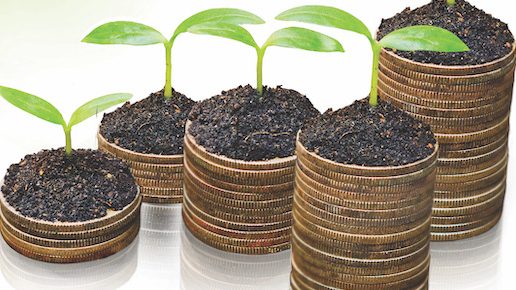
It’s been a bit of a roller coaster for farmers over the last few years: the heat dome of 2021, supply chain fiascos, record high fertilizer prices, the list goes on and on. And it’s all been a little hard on the bottom line, hard enough that many farmers are taking a closer look at available insurance and income support programs.
One of these programs, AgriStability, often gets overlooked because some farmers find it too complicated, or don’t think the program will work for them for one reason or another. But if you think of it as one part of a comprehensive risk management plan — one thread in the security blanket, so to speak — then maybe it’s time to take a closer look.
WHAT IS AGRISTABILITY
AgriStability was created in 2007 and is a whole-farm, marginbased insurance program that provides support to farmers experiencing large income drops.
Because it is a margin-based program, farmers need to first establish a reference margin for their business — this is the yardstick used to determine whether a payment is warranted or not.
Reference margins are based on the last five years of history, starting with the most recent year. So, for the 2024 AgriStability program, your farm’s production margins from 2019 to 2023 are used to create the reference margin — the highest and lowest years are taken off, the remaining three are averaged together and, Bob’s your uncle, you’ve got a reference margin. This is a rolling figure, too — reference margins for the 2025 program will be generated from your farm’s 2020 to 2024 financials.
AgriStability payments kick in if, for whatever reason — say commodity or livestock prices suddenly drop or input costs rise (fertilizer, anyone?) or yield is down precipitously — your production margin this year falls below your reference margin by 30 per cent. When that happens, the program pays 80 per cent on every dollar lost below that threshold to a maximum of $3 million. That’s a lot of dough. And the enrolment fee is only $315 per $100,000 of margin.
Let’s not kid ourselves, AgriStability is not a simple program. But it is a vast improvement on previous income support programs as it includes the whole farm, not just parts of it like, say, crop insurance does. It accounts for what’s actually happening in the markets right now, and its basis in reference margins gives AgriStability the flexibility to respond to any conceivable farm scenario — it’s not a one-size-fits-all program.
WHAT AGRISTABILITY IS NOT
According to MNP, which is the only ag accounting firm in Canada with a dedicated AgriStability practice area, misunderstandings about the program are the biggest barrier. Here are a few thing MNP would like farmers to know.
Cash vs. accrual accounting. If you’re signing up to AgriStability for the first time, the starting point is your tax returns. But taxes are cash based, for the most part, and don’t always account for inputs sitting on the farm right now, or pre-pays or grain inventory or any number of things where money has been spent or is anticipated but not yet accounted for in the books.
AgriStability is an accrual-based system so how do you calculate your reference margin properly? It can all feel pretty heavy for the first timer, but MNP notes that it is all there in your financial statements, which are based on accrual accounting, and they are used to determine your accruals, back those into your tax returns and come up with a true reference margin.
You share the risk. AgriStability was never designed to make you whole in a bad year. The program is not designed to support losses, but to support margin drop. In other words, AgriStability is an insurance program, not a guarantee program, and it expects farmers to take on some of their own risk in the form of that 30 per cent production margin drop. After that, it will cover some of your income loss.
Include other tools. AgriStability should be one tool of many in your risk management strategy. Think of it like house insurance — you never want to use it, but you want it there in case something really bad happens. AgriStability is insurance for your overall farm balance sheet, but if it hails, you still want to have crop insurance.
This is not over-egging your risk management strategy, either. Payouts from private crop insurance, for instance, do not count as allowable income under AgriStability. And there is no longer a cap on expenses when determining reference margins.
GET ADVICE, TRUST YOURSELF
The best advice from MNP is to seek good advice and trust your instincts. You know if you’re having a good year or not. You know if your herbicide bill went up or if it cost more to feed your cattle. You know if things feel off and that’s when you should be seeking that advice and discussing your options.
The fact is that AgriStability may not be right for you. But, at least talk to someone who can walk you past all the accounting terminology and talk to you about your farm, what’s happening there and what you might need to protect your balance sheet in tough times.